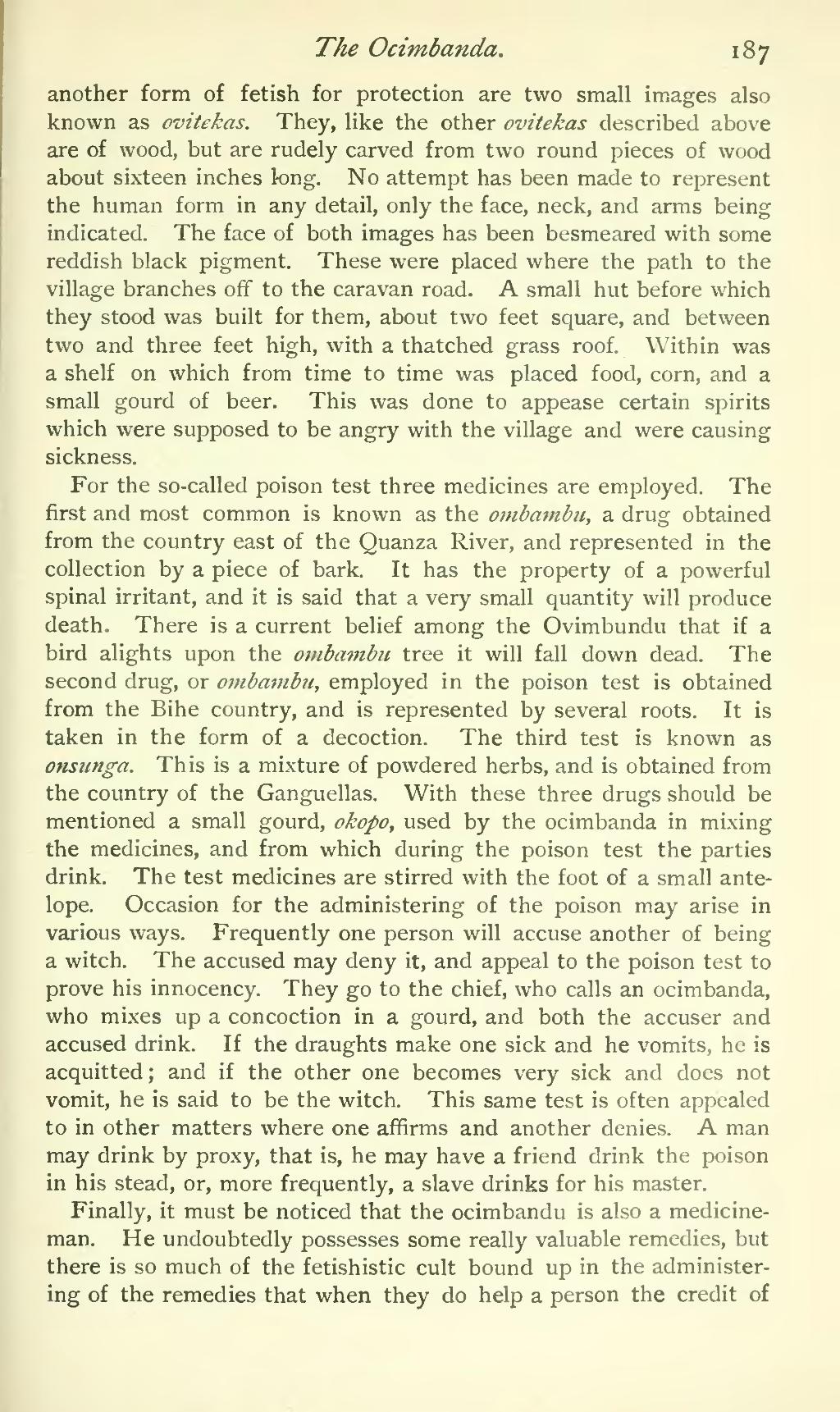another form of fetish for protection are two small images also known as ovitekas. They, like the other ovitekas described above are of wood, but are rudely carved from two round pieces of wood about sixteen inches long. No attempt has been made to represent the human form in any detail, only the face, neck, and arms being indicated. The face of both images has been besmeared with some reddish black pigment. These were placed where the path to the village branches off to the caravan road. A small hut before which they stood was built for them, about two feet square, and between two and three feet high, with a thatched grass roof. Within was a shelf on which from time to time was placed food, corn, and a small gourd of beer. This was done to appease certain spirits which were supposed to be angry with the village and were causing sickness.
For the so-called poison test three medicines are employed. The first and most common is known as the ombambu, a drug obtained from the country east of the Quanza River, and represented in the collection by a piece of bark. It has the property of a powerful spinal irritant, and it is said that a very small quantity will produce death. There is a current belief among the Ovimbundu that if a bird alights upon the ombambu tree it will fall down dead. The second drug, or ombambu, employed in the poison test is obtained from the Bihe country, and is represented by several roots. It is taken in the form of a decoction. The third test is known as onsunga. This is a mixture of powdered herbs, and is obtained from the country of the Ganguellas. With these three drugs should be mentioned a small gourd, okopo, used by the ocimbanda in mixing the medicines, and from which during the poison test the parties drink. The test medicines are stirred with the foot of a small antelope. Occasion for the administering of the poison may arise in various ways. Frequently one person will accuse another of being a witch. The accused may deny it, and appeal to the poison test to prove his innocency. They go to the chief, who calls an ocimbanda, who mixes up a concoction in a gourd, and both the accuser and accused drink. If the draughts make one sick and he vomits, he is acquitted; and if the other one becomes very sick and does not vomit, he is said to be the witch. This same test is often appealed to in other matters where one affirms and another denies. A man may drink by proxy, that is, he may have a friend drink the poison in his stead, or, more frequently, a slave drinks for his master.
Finally, it must be noticed that the ocimbandu is also a medicine-man. He undoubtedly possesses some really valuable remedies, but there is so much of the fetishistic cult bound up in the administering of the remedies that when they do help a person the credit of
